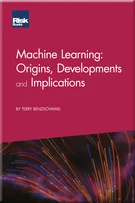The evolution of portfolio theory
Yoram Lustig and Sébastien Page
The evolution of portfolio theory
Foreword: Preparing for change: Notes from an asset management leader
Preface
Introduction
The evolution of portfolio theory
Factor investing for practitioners
Introduction to alternative risk premium investing
Systematic credit investing
Enhanced risk parity and factor investing: ATP’s surplus investment strategy based on risk allocation to investment factors
Integrating climate risk considerations within portfolios: An investor’s viewpoint
Bridging theory and practice: Setting investment objectives
Bridging theory and practice: Developing an investment strategy and implementing a solution
Optimisation of trading portfolios under regulatory capital constraints
The wealth management perspective
The asset management challenge
Ignorance is bliss: Applying risk management techniques from alternatives to long only investing
The digitalisation of portfolio construction – Part 1
The digitalisation of portfolio construction – Part 2
This chapter will review the evolution of portfolio theory from the 1950s to 2020. Over seven decades, academic researchers and practitioners have been developing portfolio theory from the origins of the concept of an investment portfolio to the contemporary theory and practices.
Organised in chronological order this chapter starts with Markowitz’s modern portfolio theory (MPT), which was introduced in the 1950s and widely regarded as the foundation of portfolio theory. Then the chapter details the next key development: the Capital Asset Pricing Model (CAPM), which was built on the tenets MPT in the 1960s. We then present an overview of the 1970s, a prolific decade for advancement in portfolio and finance theory, including the development of Asset Pricing Theory (APT), the foundation of multi-factor investing, the Black-Scholes option-pricing model and behavioural finance. Moving to the 1980s and 1990s, the chapter looks at the enhancements in predicting future volatility with the Arch model, at the focus on downside risk of post-modern portfolio theory and at the Fama-French three-factor model. The next section reviews developments of the 21st century such as the endowment
Copyright Infopro Digital Limited. All rights reserved.
As outlined in our terms and conditions, https://www.infopro-digital.com/terms-and-conditions/subscriptions/ (point 2.4), printing is limited to a single copy.
If you would like to purchase additional rights please email info@risk.net
Copyright Infopro Digital Limited. All rights reserved.
You may share this content using our article tools. As outlined in our terms and conditions, https://www.infopro-digital.com/terms-and-conditions/subscriptions/ (clause 2.4), an Authorised User may only make one copy of the materials for their own personal use. You must also comply with the restrictions in clause 2.5.
If you would like to purchase additional rights please email info@risk.net










